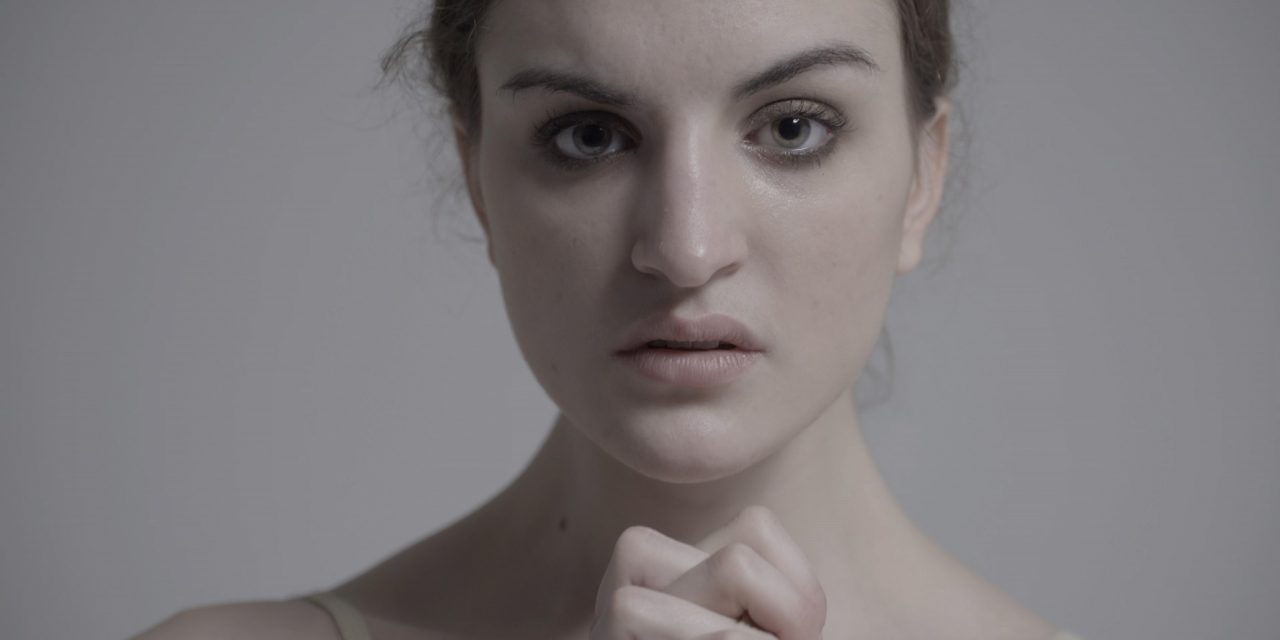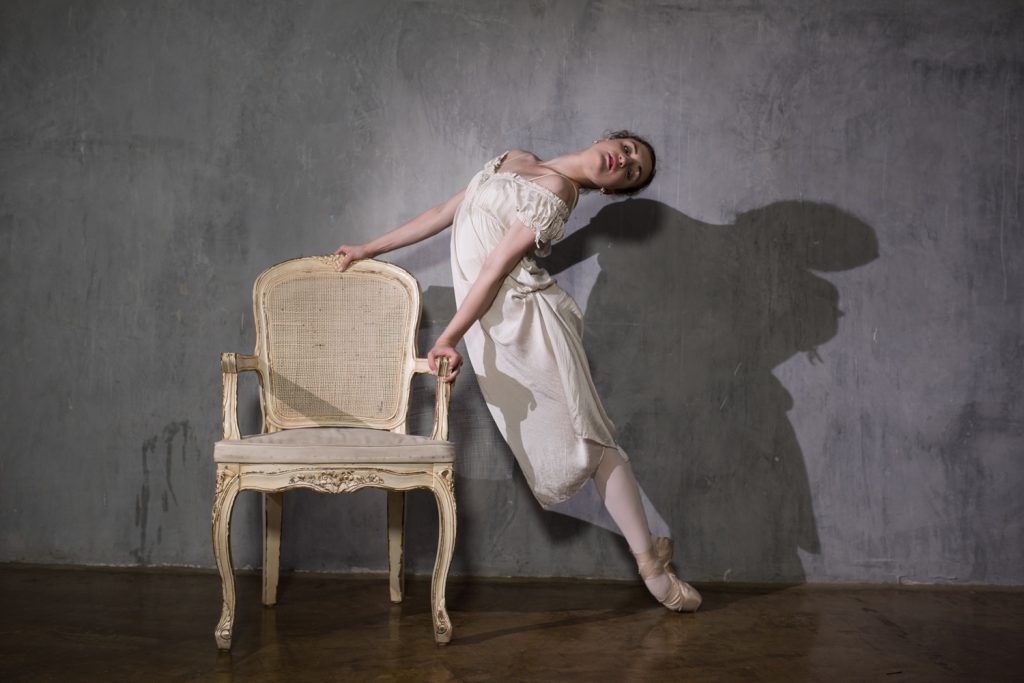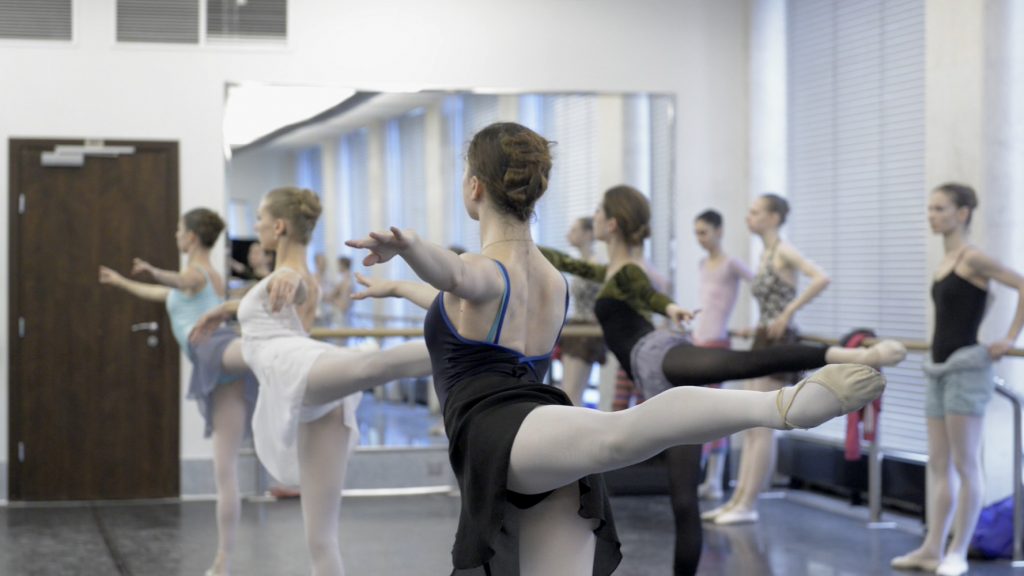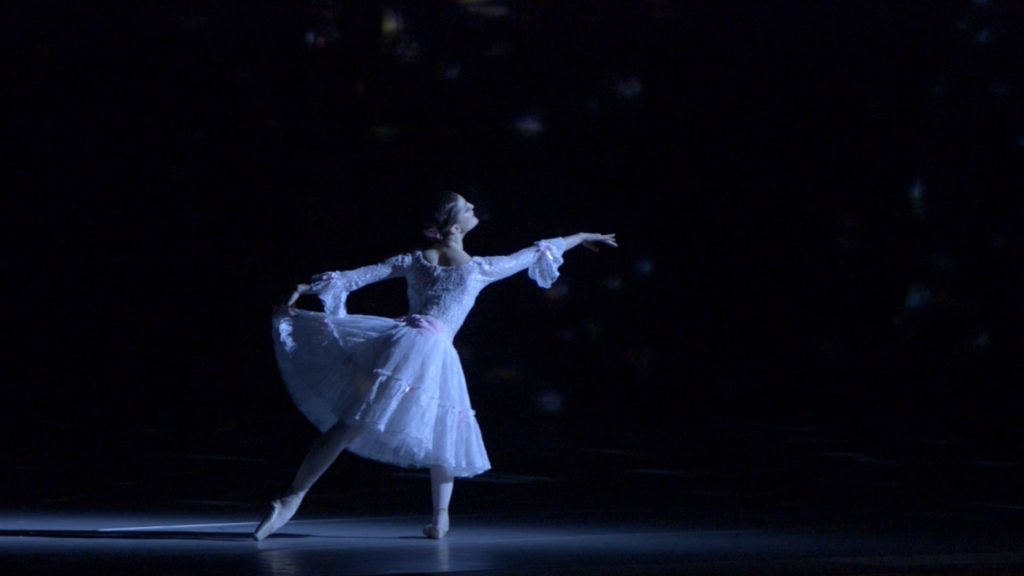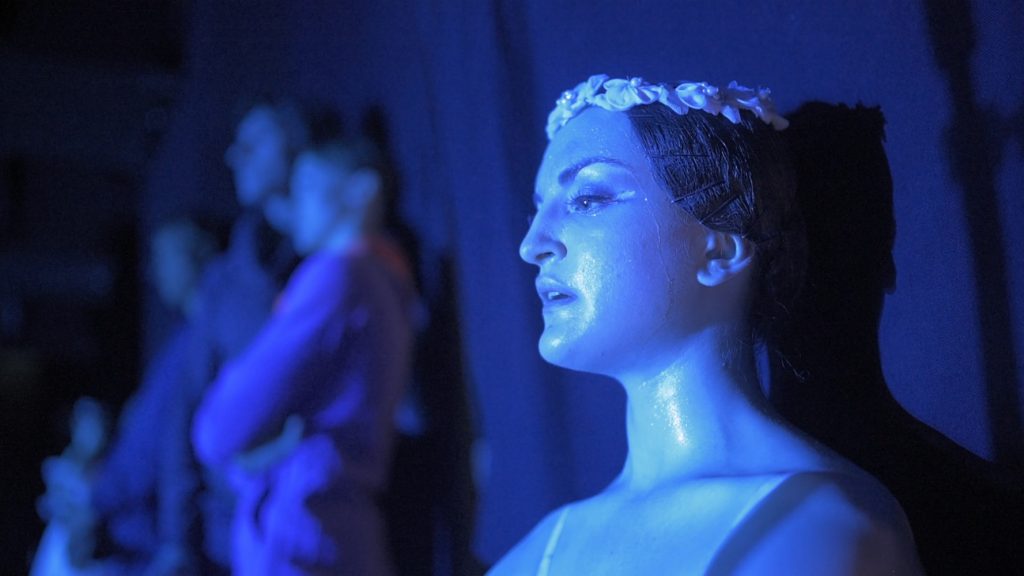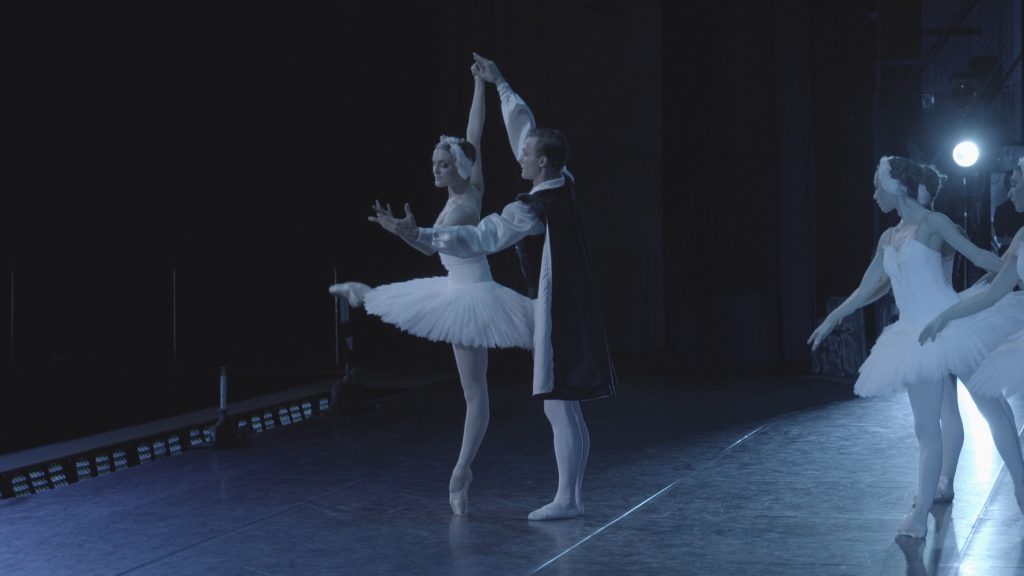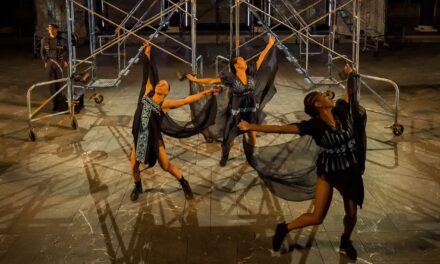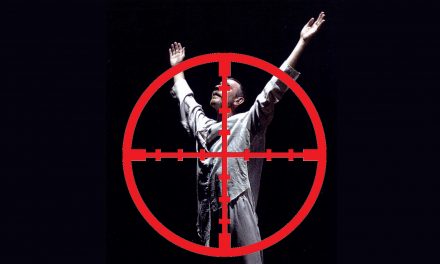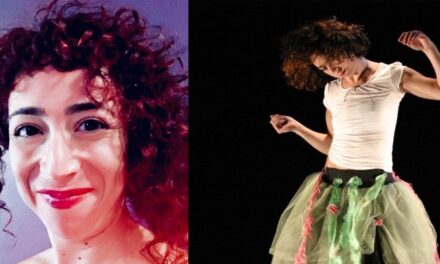Film Movement has announced the release of Joy Womack: The White Swan, a documentary film by Dina Burlis and Sergey Gavrilov featuring ballet dancer Joy Womack. This 90 minute documentary written by Burlis and Daria Kiselev is scheduled to premiere in select theaters and Virtual Cinema, VOD & Digital on December 10, 2021. Joy Womack: The White Swan documents the dancer’s life and career while training and living in Russia. It also features Womack’s ex-husband Nikita Ivanov-Goncharov; Natalia Goncharova, art director of Grim Massa Theater; American reporter Elizabeth Shvedenko; and Tatiana Kuznetsova, a preeminent Russian ballet critic.
I was provided an advanced viewing of Joy Womack: The White Swan and found it very informative and visually stunning. In addition to learning more about this beautiful, straight forward and outspoken dancer, it is worthwhile to see this film to understand what hurdles a female ballet dancer must endure to reach the status of soloist, principal, and finally prima ballerina. The competition for women in Ballet has always been fierce and even vicious, but for Womack as an American living and training in Russia those hurdles were raised even higher. The training she received in America was vastly different than what was expected of her at the Bolshoi Ballet Academy and for decades Russians have been conditioned to think of Americans as horrible people. Womack worked in Moscow during a time when the political relations between the two countries was, and still is, in constant flux.
Joy Womack grew up in Texas and California and studied at Westside Ballet School of Ballet in Santa Monica, among other places. She moved to Russia at age 15, became fluent in Russian, and Burlis’s film gives the viewer a closer look into Womack’s personal and professional life in Moscow. We watch as she drives herself to train and rehearse longer hours than her Russian classmates at the Bolshoi Ballet Academy, struggle with injuries and financial difficulties that almost end her chances there. The film follows Womack as a dancer with Bolshoi Ballet, and the ramifications of statements that she made regarding the politics behind the selections of who gets to perform which roles and when.
In a 2017 Dance Magazine interview with Womack, I learned that she “made major news in 2012 when she joined the Bolshoi Ballet at the age of 18. And she did it again a few years later when she quit, claiming the company’s corruption had driven her away.”
In Joy Womack: The White Swan we watch as Womack falls in love with and marries Russian dancer Nikita Ivanov-Goncharov, the problems that lead to their divorce, her becoming a prima ballerina with the Kremlin Ballet, and finally getting the chance to perform the lead in Swan Lake. The way this film is edited aids viewers who might not be aware of a ballet dancers rigorous training regime to witness and feel the repetition and the exhaustion that all dancers endure.
Womack did make history when she became the first American woman to graduate from the Bolshoi Ballet Academy but she was preceded in the 1980s by Michael Shannon who first trained on full scholarship at the School of American Ballet, the National Ballet School of Canada, and the Hungarian State Ballet Academy. Discovered by the Bolshoi at age 16, he was the “First American Graduate of the Bolshoi Ballet Academy.” Shannon went on to become a Principal Dancer for the Bolshoi Ballet, Birmingham Royal Ballet, Vienna State Opera Ballet, Stars of the Bolshoi Ballet, Hungarian State Opera Ballet, and Kremlin Palace Ballet Theatre. Shannon now resides in Tokyo, Japan and is a Choreographer and Master Teacher for Architanz.
Research revealed a 2013 article in the Detroit Free Press that a third American Bolshoi Ballet Academy graduate, Maria Theresa Beck, went on to join Moscow’s Stanislavsky Theatre, another premier Russian dance company. In the 2013 by article by Patricia Montemurri, Kirshner said that about 20 Americans, some as young as 13, were living in Russia and studying at the Academy. Beck has performed roles in Don Quixote, Swan Lake, Stone Flower and other ballets.
“Womack herself is very much a documentary filmmaker’s dream: outspoken and always willing to take center stage, she is a force of nature to be reckoned with…. Lively and action-packed throughout its running time, this portrait of a woman bulldozing herself through life, taking no prisoners is impressive. ” — Meredith Taylor, Filmuforia
Womack joined the Bolshoi Ballet as a soloist in 2012 before becoming the prima ballerina of the Kremlin ballet in 2014. She joined the Universal Ballet in Seoul, Korea as a principal dancer in 2017 and is currently a prima ballerina at the Astrakhan Opera and Ballet Theatre. Womack’s story will soon be made into a feature film titled Joika, written and directed by James Napier Robertson and starring Diane Kruger alongside Talia Ryder. Ryder will play Womack with Kruger portraying her trainer and mentor Volkova, a former ballet dancer and the head of the Bolshoi’s training academy. In the meantime, I highly recommend that you try and see Joy Womack: The White Swan when it comes to a theatre near you or search it out online.
# # # #
WHAT: Documentary film Joy Womack: The White Swan by Dina Burlis and Sergey Gavrilov
WHEN: Premieres December 10, 2021
WHERE: Select theaters and Virtual Cinema, VOD & Digital
Credits
JOY WOMACK: THE WHITE SWAN (2020)
Directed by: Dina Burlis, Sergey Gavrilov
Written by: Dina Burlis, Daria Kiseleva
Produced by: Dina Burlis, Sergey Gavrilov
Co-Produced by: Daria Kiseleva
Executive Produced by: Denis Krupnov, Anna Krupnova
Director of Photography: Sergey Gavrilov
Editing by: Dina Burlis, Danila Kuznetsov
Genre: World Cinema/Documentary
RT: 90 minutes
Aspect Ratio: 1.78: 1
Sound: 2.0 Stereo
Language: Russian with English Subtitles, English
For USA release information, please contact: FILM MOVEMENT BOOKING: Maxwell Wolkin | Theatrical & Festivals – (212) 941-7744 x211 | maxwell@filmmovement.com
Written by Jeff Slayton for LA Dance Chronicle.
Featured image: Joy Womack: The White Swan – A Film by Dina Burlis and Sergey Gavrilov – Photo courtesy of Film Movement.

